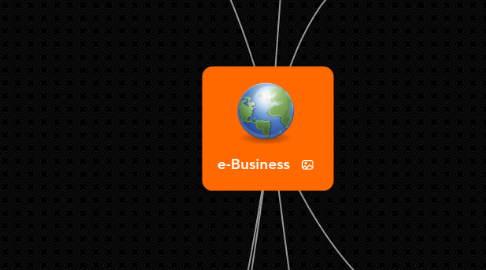
1. C2C
1.1. 'Customer To Customer (C2C)'. A business model that facilitates an environment where customers can trade with each other
1.1.1. Online auctions
1.1.2. Bidder & Seller
1.1.3. Social media sites
1.1.4. Benfits no inventory or warehouse costs.
2. CRM
2.1. 1. Personalization
2.2. 2. Customization
2.3. 3- Virtualization
2.4. 4- Interactivity
2.5. 5- Reachability
2.6. 6- Security
2.7. 7- Privacy
3. B2B
3.1. For consumer brands the buyer is an individual. In B2B there are usually committees of people in an organization and each of the members may have different attitudes towards any brand. In addition, each party involved may have different reasons for buying or not buying a particular brand.
3.2. describes commerce transactions between businesses, such as between a manufacturer and a wholesaler, or between a wholesaler and a retailer. Contrasting terms are business-to-consumer (B2C) and business-to-government (B2G). B2B branding is a term used in marketing.
3.3. Companies seek long-term relationships as any experiment with a different brand will have impacts on the entire business. Brand loyalty is therefore much higher than in consumer goods markets.
3.4. While consumer goods usually cost little in comparison to B2B goods, the selling process involves high costs. Not only is it required to meet the buyer numerous times, but the buyer may ask for prototypes, samples and mock ups. Such detailed assessment serves the purpose of eliminating the risk of buying the wrong product or service.
4. Advatges & Disadvantages of eCommerce
4.1. Advantages
4.1.1. 1- Faster buying/selling procedure, as well as easy to find products. Buying/selling 24/7.
4.1.2. 2 -More reach to customers, there is no theoretical geographic limitations. Low operational costs and better quality of services.
4.1.3. 3- No need of physical company set-ups. Easy to start and manage a business.
4.1.4. 4- Customers can easily select products from different providers without moving around physically.
4.2. Disadvantages
4.2.1. 1 - Any one, good or bad, can easily start a business. And there are many bad sites which eat up customers’ money.
4.2.2. 2 - There is no guarantee of product quality. Mechanical failures can cause unpredictable effects on the total processes.
4.2.3. 3 - As there is minimum chance of direct customer to company interactions, customer loyalty is always on a check.
4.2.4. 4 - There are many hackers who look for opportunities, and thus an ecommerce site, service, payment gateways, all are always prone to attack.
5. B2E
5.1. Business-to-employee, an approach in which the focus of business is the employee, rather than the consumer as it is in business-to-consumer
6. B2C
6.1. e-commerce is concerned with businesses selling products to customers.
6.2. Virtual e-tailing: These firms sell to customers over the Internet while not maintaining any type of physical sales location.
6.3. The click-and-mortar approach: With this approach the firm sells to customers through the Internet and through physical sales locations.
6.4. e-malls.: Electronic malls (e-malls) are combinations of several online merchants in one location. Some malls are just an aggregation of merchants, while other malls provide integrated services (like a single checkout for many merchants).
6.5. Online wedding and gift services: These services provide the ability to create “want” lists that can be accessed and purchased by others for the recipient.
7. B2G
7.1. 1. Government-to-citizens :
7.1.1. The government-to-citizens model includes all interactions between a government and its citizens.
7.2. 2. Government-to-business :
7.2.1. The two main areas of government–to-business activities include electronic procurement where the government purchases goods from the private sector.
7.3. 3. Government-to government :
7.3.1. Describing internal or external Government to Government data communications.
7.4. 4-Government-to-employee:
7.4.1. Is the online interactions through instantaneous communication tools between government units and their
